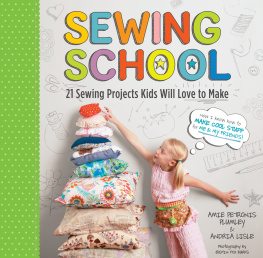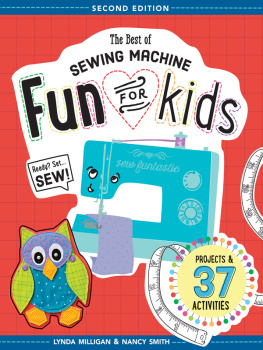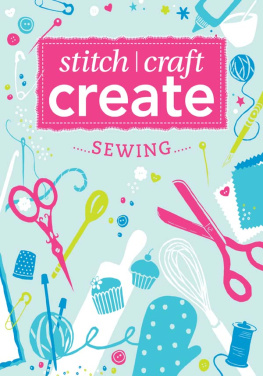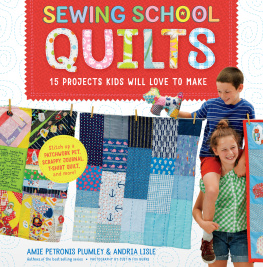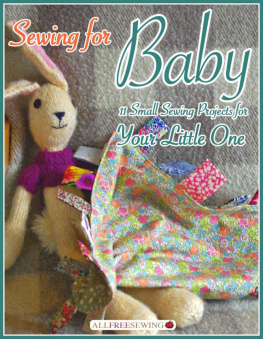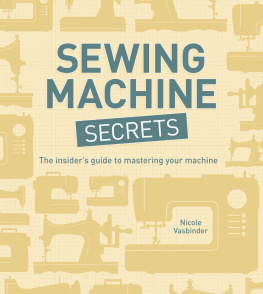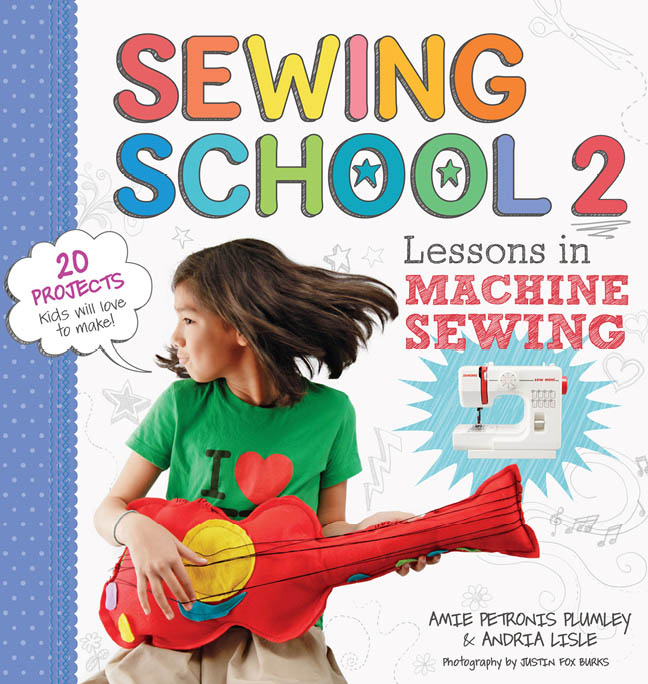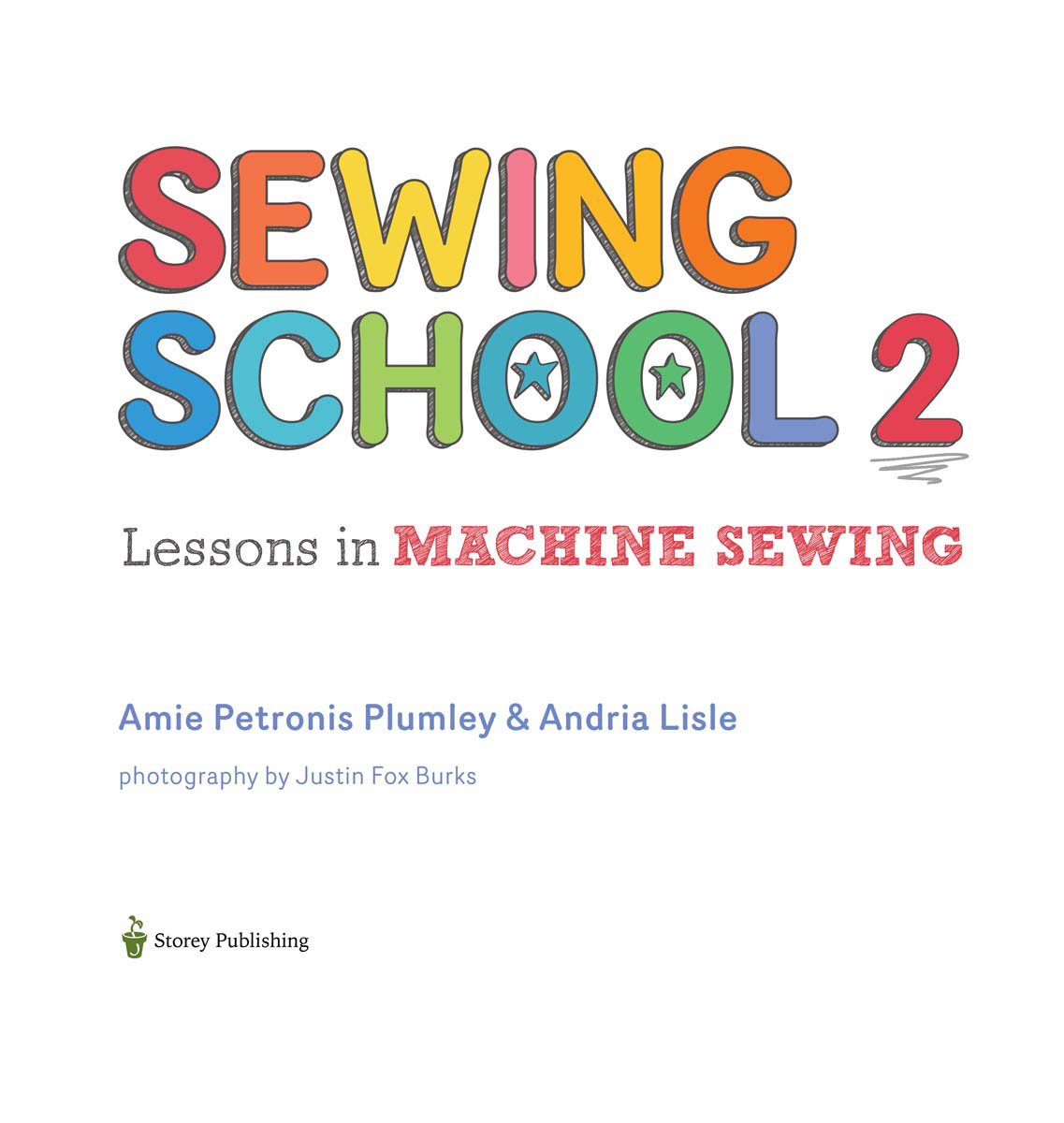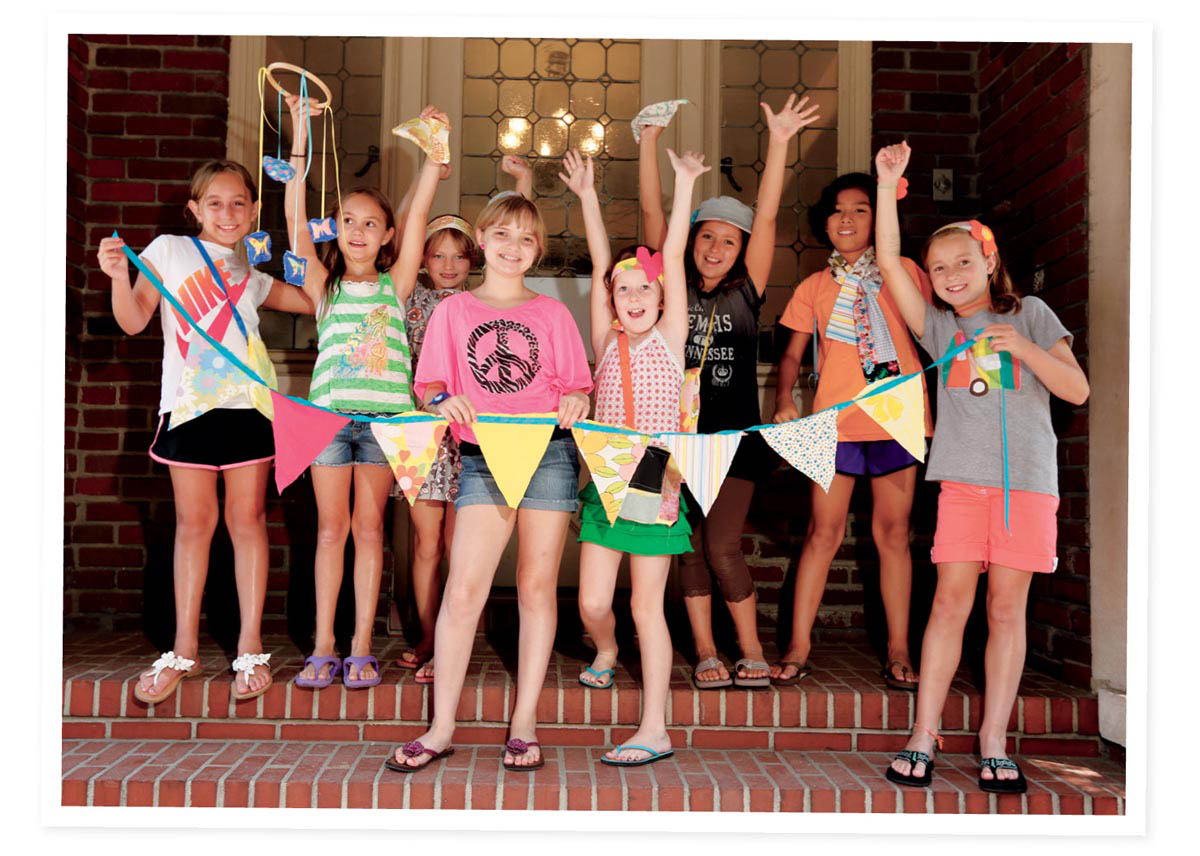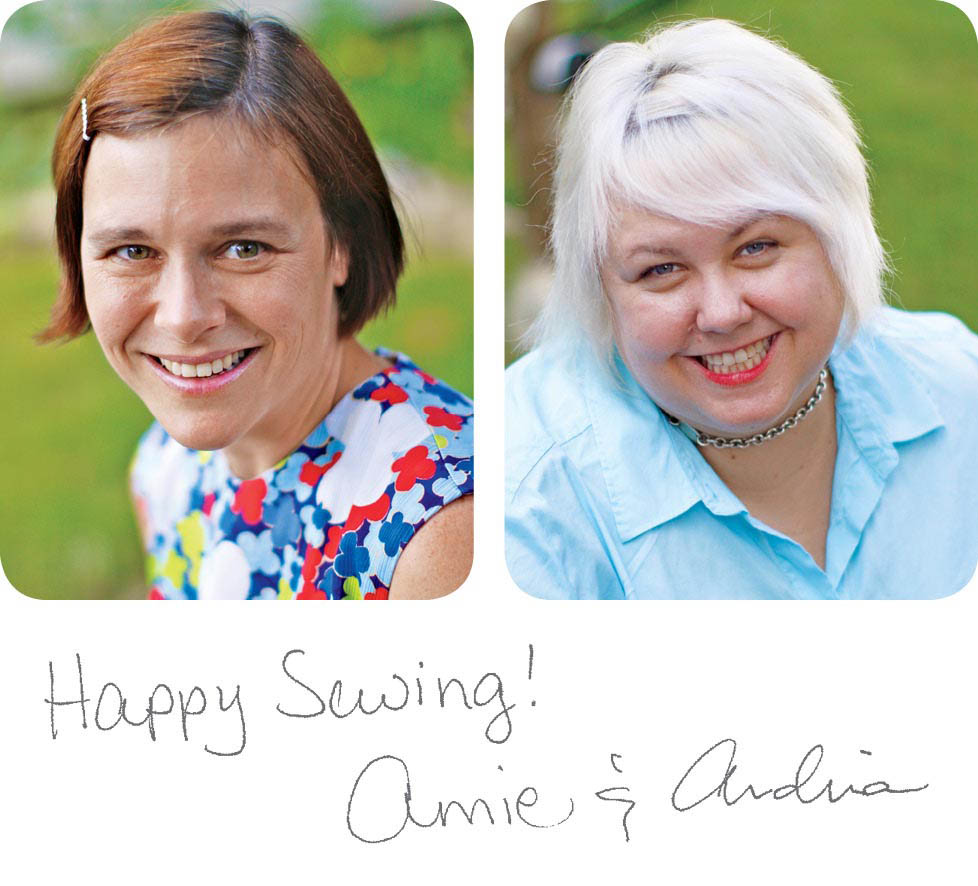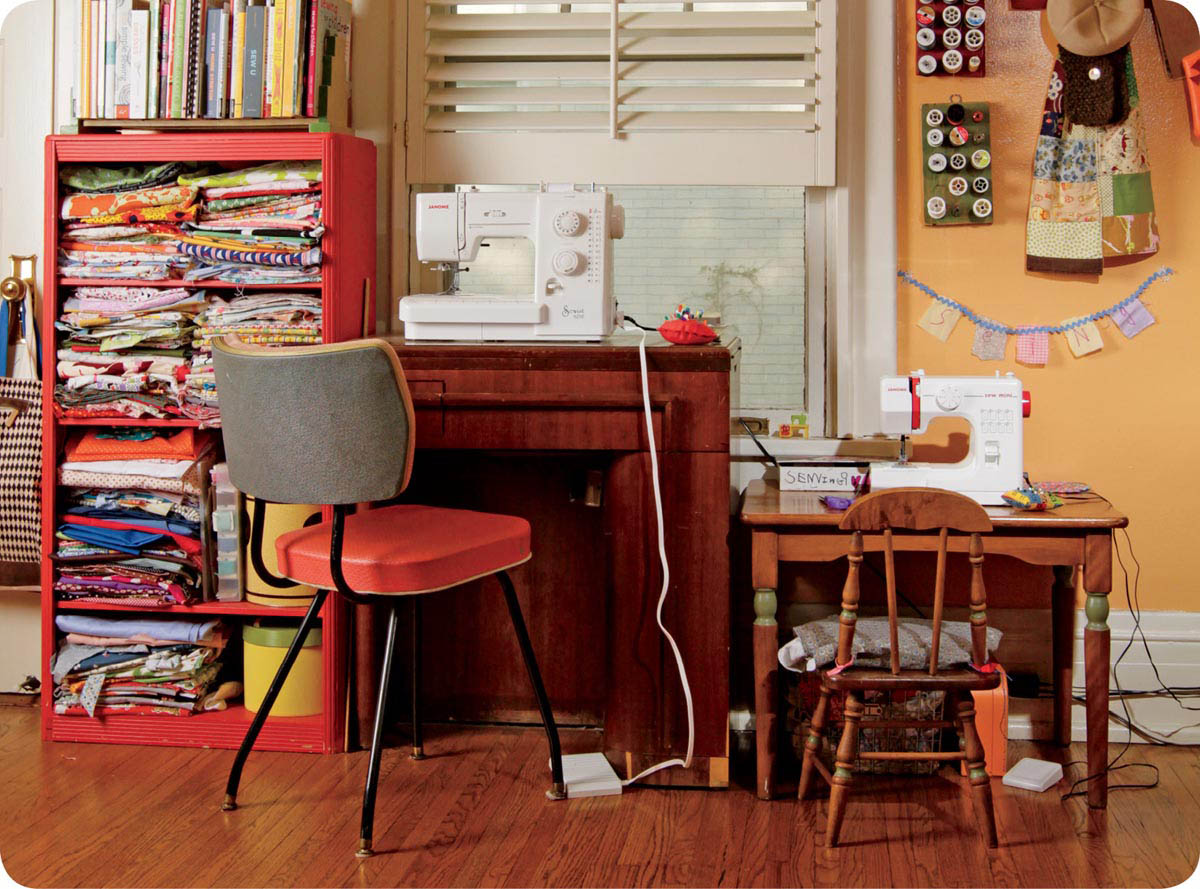Dedicated to all the kids who have sewn with us, both in person and through Sewing School.
Acknowledgments
This book would not be without the cheerleading, love, and enthusiasm from so many.
To Grace-St. Lukes Episcopal School: GSL has become our home base for sewing with kids. Under the direction of headmaster Thor Kvande, the students, parents, teachers, and staff have embraced our mission and provided inspiration and encouragement. A special shout out to all the super sewers that attend our summer day camp and after school sewing club. You guys are the heart behind this book! Wendi Smith and the GSL Parents Association for generously sharing their space with us. Martha Young and Emily Merrill for helping us whenever we needed it. Big hugs to Libby Shannon, Katie Donald, Cindy Sorrells, and Jill Beaumont for threading countless needles, offering advice, and helping to make our ideas a reality.
To our families: What would we do without you?! The constant talk of sewing, asking your opinion about things you know nothing about, and covering for us when we were working on deadlines. Kisses to Eric, Phoebe, and Frankie Plumley; Betty, Maclin, Jeff, and Mary Ann Lisle, as well as Levon Williams and the staff at the Memphis Brooks Museum of Art, Amy Lawrence, Graham, III, and Bianca Burks.
To everyone at Storey Publishing: We are so lucky to be working with a publisher that truly understands our message. Deborah, Pam, Beth, Alee, Jess, Jessica, and Mars you guys rock!
To helpful friends: Cynthia Mann at Birch Fabrics for generously supplying us with fabric for the Patchwork Scarf we couldnt imagine using anything else! Doug Halijan for his expert advice and Kevin Barr, for his fabulous author photos. Mary Alllison Cates and Susan Schwartz at Sew Memphis for including us in their fabric store dreams!
To the readers of Sewing School and our blog: You validate what we are doing, and we love sharing ideas and seeing your wonderful creations.
Contents
A Note to You from the Authors
Hello! Were delighted to discover that so many kids love sewing as much as we do. When we were young like you, we couldnt wait to learn how to sew and make things all by ourselves.
When Amie was just a little girl, she would watch over her mothers shoulder as her mom made all kinds of things on the sewing machine. When she got a little bit older, her mom taught her how to use a sewing machine on her own. Soon, Amie was making her own clothes and fun things for her room! She didnt get her very own sewing machine until after she graduated from college, but now Amie has two machines set up side by side; one for her to use, and one for her daughter, Phoebe.
Andria also grew up watching her mama sew. One Christmas, when she was about six years old, Andria found a funny little sewing machine under the tree. It was a toy, and instead of a needle and thread, it had a sticky glue cartridge that would glue fabrics together. It was a mess, but Andria was finally making things on her own, like blankets for her stuffed animals and clothes for them to wear. Soon after, she began to use her moms sewing machine, although she had to slow down and be more careful because she was working with a real needle and operating an electric machine.
Now that were finally adults, we sew all the time. Amie makes all kinds of clothes for her entire family. She also teaches kindergarten and runs an after-school sewing club for her students. Andria likes to decorate her house with all the things shes sewn. She works at an art museum, and loves to look at the beautiful quilts and textiles that are part of the museums permanent collection.
In our free time, we like to teach children how to sew. Every summer, we hold a Sewing School day camp at Amies school. During one session, we teach hand sewing. The idea for our first book, Sewing School: 21 Sewing Projects Kids Will Love to Make, was born in our first Sewing School camp. Our summer camp sessions were so popular that we added a second class. In the second class our students, all between the ages of 7 and 13, used sewing machines to test-sew the projects in this book.
Like our campers, after youve practiced hand sewing for a while, you will be ready to move on to a sewing machine. If youve ever looked at other sewing books or sewing patterns, you might think that sewing with a machine, using patterns, and following detailed directions can be really tricky and bewildering, but its really not. Dont worry, even we get confused sometimes! Our hopes are that after sewing some of the basic projects in this book, youll be ready for more complex projects, and that soon youll be making whatever you want.
Writing this book was very important to both of us because we want kids everywhere to be able to learn how to use a sewing machine. Now, with this book by your side, you dont have to live near us to learn how to sew. You can do it whenever and wherever you want.
We cant wait for you to make all kinds of stuff on your sewing machine. Lets get started!
Amie Petronis Plumley & Andria Lisle
About This Book
An Introduction for Adults
Sewing School 2 inspires children and teaches them how to sew on a sewing machine. It features step-by-step directions, simple language, and child-created examples of contemporary projects, all made on a sewing machine.
Children are fascinated by the sewing machine. And once they learn how to safely operate one, they can easily create any of the projects in this book with minimal supervision or help. These projects build on prior knowledge, or step-up projects. Each project includes a reference for adult support, called A Note for Grown-Ups, which will provide detailed guidance on steps that might require adult assistance. The step-by-step directions are written at a second-grade comprehension level, with projects designed for sewers ages seven and older.
Please dont purchase a toy sewing machine and expect your child to be able to use it to make the projects in this book. Toy machines are usually plastic and poorly made, which will only frustrate young sewers. If youre looking for a kid-friendly sewing machine, we like the sturdy and practical Janome Sew Mini Sewing Machine. Children can also use adult sewing machines. If youre buying a used machine, you might want to take it to a repair shop for routine maintenance before your child begins to use it, as there is nothing more frustrating than using a sewing machine that doesnt properly work!
If your sewer is very young or particularly inexperienced, start by moving the sewing machine pedal to a tabletop and allowing the child to press it with one hand to make the needle go. Show your child how to raise and lower the presser foot, and gently guide the fabric while you remain in control. After a few sessions, your child should be able to handle rudimentary sewing skills on his or her own.


